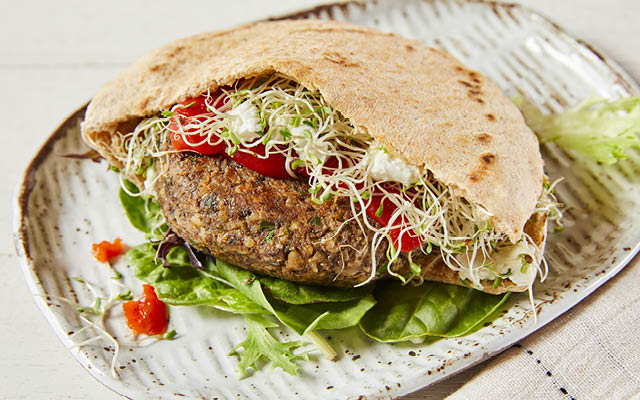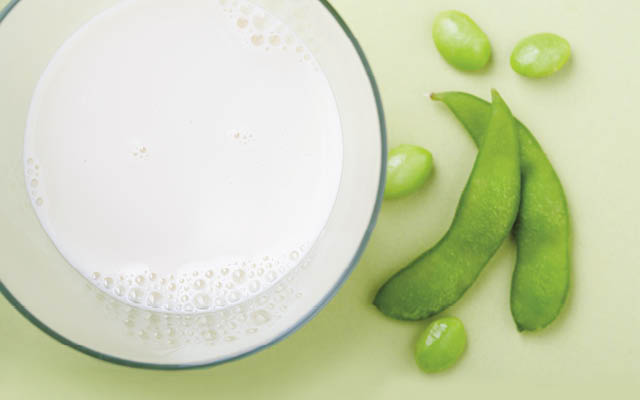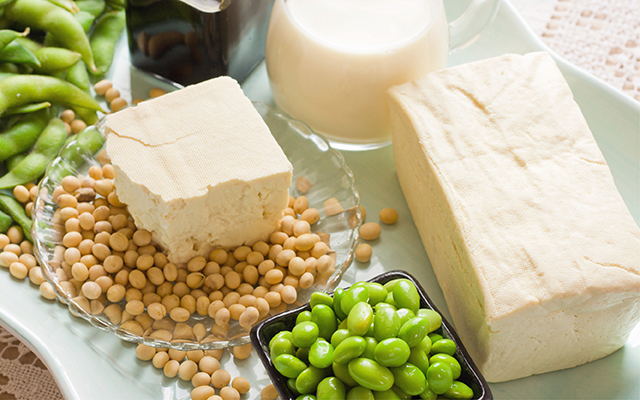1. The Newest Meat-Like Substitutes
Beyond Burger and Impossible Burger are now widely available at supermarkets and fast-food restaurants. Both are designed to look, smell, and taste like beef. The two products are relatively equal in terms of calories and macronutrients (protein, fat, and carbs); they’re not that far removed from the calories and fat content of a fast-food beef patty, though they deliver more protein.
The real issue lies in the number of ingredients: The Beyond Burger and the Impossible Burger each contain around 20 ingredients, which involves a lot of processing.
To (m)eat or not? These products can be a great option for committed vegans and vegetarians stuck without food options while traveling, when just looking for something easy to bring to a barbecue, or when you’re craving the burger experience without the beef. For personal and planetary health, however, it’s best not to make them a regular source of protein.
2. Old-School Supermarket Veggie Burger
Like the newer meat substitutes, most supermarket veggie burgers sport long ingredient lists. That said, some experts find more nutritional merit in them. “There are a few vegan options that are widely accessible that I can get behind when someone is in a pinch,” says Morra. “My favorite is likely Sunshine Burgers, which are non-GMO. The ingredients for their Garden Herb burger are as follows: organic cooked brown rice, organic ground raw sunflower seeds, organic carrots, organic chives, sea salt.”
She also likes the ingredients in Quorn Meatless Fillets and Dr. Praeger’s California Veggie Burgers.
Lipski recommends Gardenburgers for those who want or need a quick meat substitute. “When I read their label, it’s at least mainly real food,” she says. “The best advice is to read the ingredients list — are the ingredients ones you would use if cooking at home?”
To (m)eat or not? As a processed food, supermarket veggie burgers come with some of the same concerns as the newer meat substitutes, but they can be a great option when you’re seeking variety or you’re too tired to cook dinner. Look for brands that contain mostly real food.
3. Seitan
Made from concentrated wheat gluten and high in protein relative to soy, seitan is a processed and potentially inflammatory food. Anyone suffering from celiac disease should avoid it — and even the gluten-sensitive have reason to be wary. In these cases, research suggests gluten may damage the gut lining, which can cause inflammation.
To (m)eat or not? Seitan can be an OK occasional option for gluten-tolerant vegans and vegetarians. It’s best used as an occasional special dish, not as part of the daily diet.
4.Homemade Veggie Burger
Recipes for delicious, nourishing, plant-based burgers abound. Look for ones that use whole-food ingredients, and enjoy. (Check out our mushroom walnut burger at “Mushroom Walnut Burgers”.)
To (m)eat or not? From a health perspective, and likely from a climate one, too, making your own plant-based burger is the winner. You can find recipes that combine phytonutrient-rich and protein-dense whole foods to create satiating, decadent meals. “It’s pretty simple to cook some beans and add grains and onions and spices to make your own burgers,” says Lipski.
5. Tempeh
Fermentation makes tempeh’s protein more digestible, and its nutrients more bioavailable, than those of other soy foods. This gives it a leg up on tofu as well as other forms of nonfermented soy.
Tempeh also features a nice short ingredients list. When it contains items other than soy and culture, it’s usually just seeds and seasoning.
To (m)eat or not? Tempeh is among the least processed of all soy foods, and fermentation makes it the most digestible. While some research has highlighted potential health risks from eating a lot of soy, tempeh makes a good plant-based protein that you can enjoy more often than some others — just make sure it’s non-GMO soy.
6. Grilled Portobello Mushroom
The ultimate whole-food, plant-based meat substitute! One ingredient and great all-natural meaty flavor. The only downside is the mushrooms’ relative lack of protein, so if you make a mushroom your main course, you may not feel truly sated at the end of your meal. Grilling can also create carcinogenic compounds.
To (m)eat or not? Enjoy in abundance! Pair your grilled mushroom with legumes, tahini spread, or another source of protein to increase satiety. Marinating mushrooms in a teriyaki or turmeric-garlic sauce before putting them on the grill can add even more vibrant flavor.
7. Falafel
Falafel is a Middle Eastern mixture of chickpeas, herbs, and spices, shaped into a ball. It’s a good source of protein and contains only whole foods. It’s traditionally deep-fried, however, which isn’t ideal: Very high heat can transform even a healthy oil into a trans fat.
To (m)eat or not? Falafel’s ingredients are great, though its traditional preparation method may negate some of its benefits. Enjoy falafel primarily at home, where you can fry it lightly in olive oil or bake it. Enjoy restaurant falafel as an occasional treat.
This originally appeared in “What’s Up With Fake Meat?” in the October 2020 print issue of Experience Life.




This Post Has 0 Comments